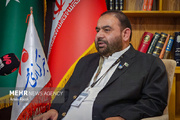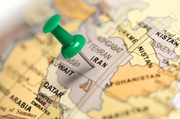According to history books, Ecbatana became the capital of the Medes in the late 8th century BC, but the recent studies show that the site identified as Ecbatana was inhabited during the Parthian era and was probably built in that time or slightly earlier, team director Masud Azarnush said.
“Several remains of earthenware as well as brass coins from the Parthian era were discovered during the recent excavations in an area covering 100 square meters,” he noted.
The architectural structures of the city were probably constructed in the Parthian era as well, he said.
According to Azarnush, the new structures were built on the previous walls and foundations during different eras in the city, that is, the Sassanid layer was built on the Parthian layer. The last layers belong to the Qajar and Pahlavi dynasties.
He noted that further studies must be carried out at other parts of the site to reveal more of the history of the region.
Azarnush believes that one of the other nearby ancient mounds in Hamedan may be the real Ecbatana of the Medes. None of these mounds has been excavated yet.
According to Herodotus, Ecbatana became the capital of the Medes in the late 8th century BC, although some historians believe the city was founded in the first millennium BC.
During the Achaemenid era, it was the summer capital of the Persian Empire and the site of an important treasury, later looted by Alexander. Ecbatana was the satrapal seat of the province of Media from Achaemenid to Sassanid times.
RM/ML/HG
END
MNA

























Your Comment